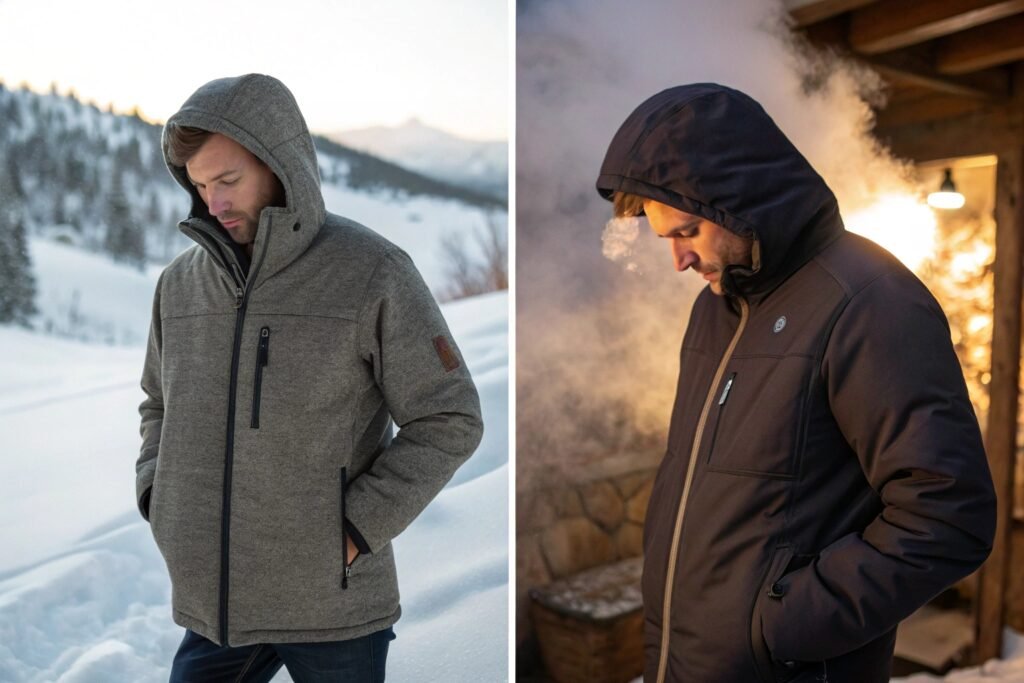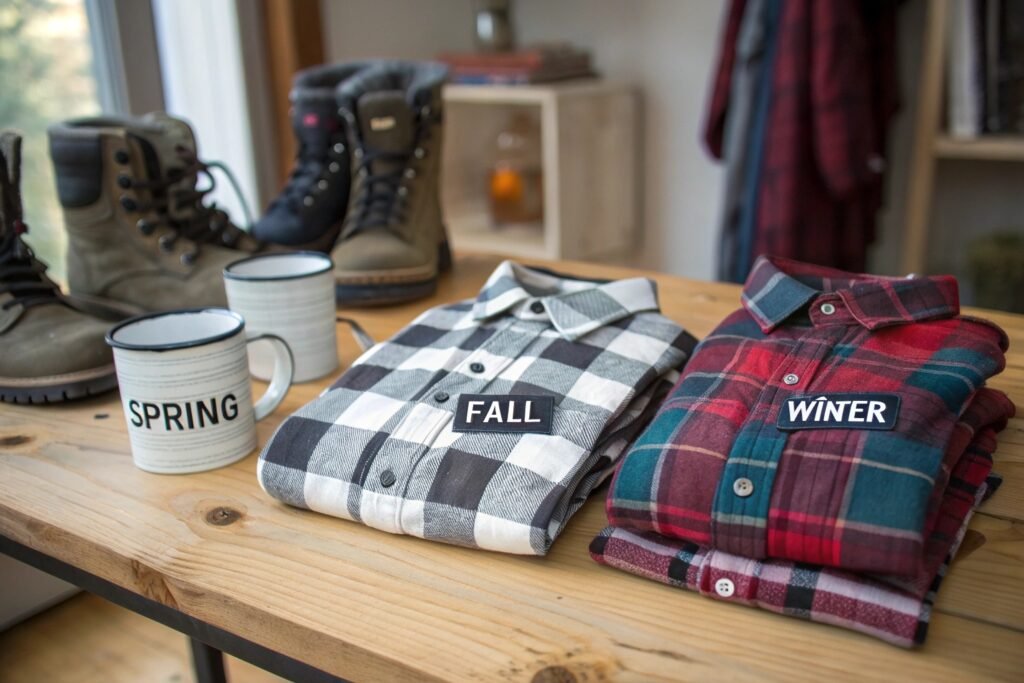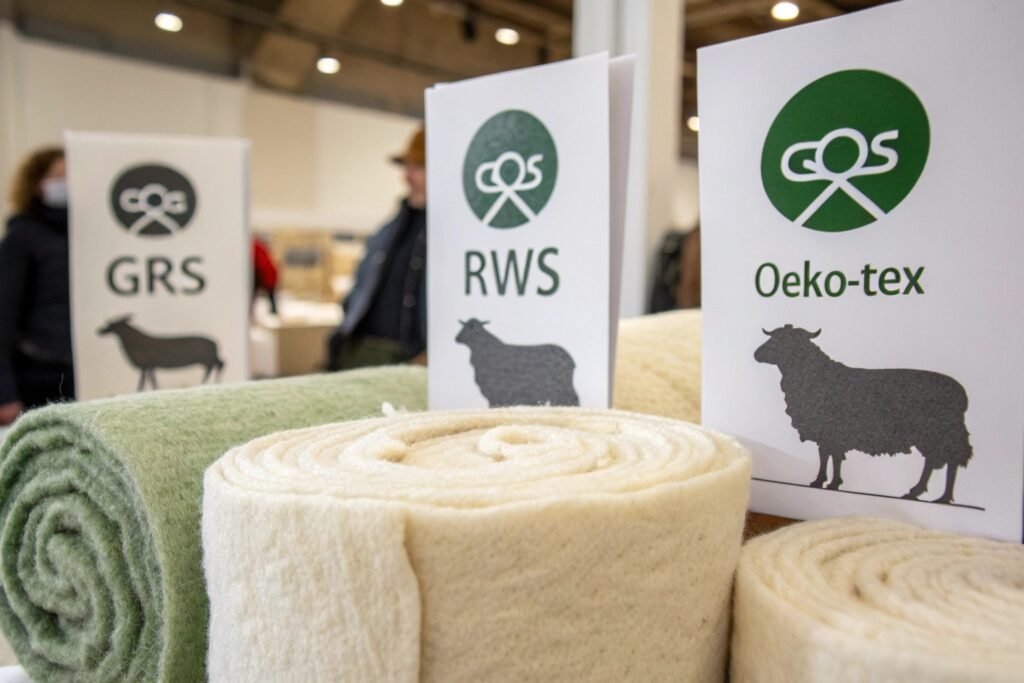Wool blend flannel is no longer just for winter lumberjack looks. It’s now a go-to fabric for temperature-regulating shirts across seasons—blending natural thermal properties with comfort and style. Whether you're producing outdoor apparel, heritage-inspired collections, or upscale casualwear, wool blend flannel offers a functional and aesthetic edge.
This guide breaks down why wool blend flannel is ideal for breathable warmth and how you can source it for your brand’s smart layering pieces.
The Science Behind Wool’s Thermal Performance
Wool is a naturally insulating fiber due to its crimped structure, which traps air to maintain body warmth while releasing excess heat and moisture.

How Does Wool Help Regulate Body Temperature?
- Insulates when cold: Wool fibers retain warmth without overheating
- Breathes when warm: Moisture-wicking capacity allows body to stay dry
- Adapts across climates: Wool reacts to body temp, making it ideal for transitional seasons
Sources:
International Wool Textile Organisation
Science of Wool – Woolmark
What Happens When You Blend Wool With Other Fibers?
- Cotton-wool blends: Increase softness, reduce cost, improve breathability
- Polyester-wool blends: Boost wrinkle resistance and moisture evaporation
- Rayon-wool blends: Improve drape and comfort in shirt applications
Explore comparative data via FabricLink or Textile Exchange.
Ideal Shirt Applications Across Seasonal Markets
Wool blend flannel isn't just for winter wear anymore. Smart fabric engineering makes it a four-season performer.

When Are Wool Blend Flannel Shirts Most Suitable?
- Spring/Fall layering: Mid-weight wool flannel balances warmth and breathability
- Winter insulation: Ideal over thermals or under coats
- Cool summer evenings: Lightweight wool-cotton blends provide comfort without overheating
Usage guides can be found at REI Co-op Journal and Outdoor Gear Lab.
What Types of Shirts Are Made from Wool Blend Flannel?
- Button-up casual shirts (solid or plaid)
- Overshirts/shackets (thicker variants)
- Workwear tops (reinforced elbows, utility pockets)
- Western shirts (stylized yokes and snap buttons)
Get inspiration from collections on Taylor Stitch and Filson.
Sourcing Tips for Quality Wool Blend Flannel Fabric
Not all flannel is created equal. For temperature-regulating shirts, fiber content, finish, and GSM (grams per square meter) matter immensely.

What GSM Range Works Best for Shirts?
- 180–200gsm: Lightweight, good for spring/fall base layers
- 220–260gsm: Ideal for most casual flannel shirts
- 280–300gsm: Thicker flannel for overshirts and cooler climates
Refer to resources from Mood Fabrics and Simplifi Fabric for swatch packs and weight guidelines.
How to Assess Quality When Sourcing?
- Double brushed flannel feels softer and warmer
- Tight weave density prevents pilling and improves longevity
- Check composition tags (e.g., 70% wool / 30% polyester)
- Request shrinkage & wash test results
Look for OEKO-TEX certified suppliers like RCS Fabrics or Testex.
Sustainable and Ethical Wool Sourcing Considerations
Conscious consumers care where the wool comes from and how it's processed. Sourcing ethically ensures your garments align with sustainable values.

What Certifications Should You Look For?
- RWS (Responsible Wool Standard): Animal welfare + land management
- GRS (Global Recycled Standard): For recycled wool blends
- OEKO-TEX 100: Free of harmful substances in dyeing/finishing
Learn more from Textile Exchange - RWS and OEKO-TEX Directory.
Where Can You Find Certified Wool Blend Flannel Suppliers?
- Italy & Portugal: High-quality, certified mills
- India & China: Competitive pricing, custom colors
- USA & Japan: Premium heritage flannels
Explore sourcing options via Foursource, Alibaba Wool Flannel, or platforms like Common Objective.
Conclusion
Wool blend flannel is more than a seasonal staple—it's a fabric engineered for temperature regulation, comfort, and timeless appeal. By blending wool with cotton, polyester, or viscose, it becomes accessible for diverse climates, modern styling, and budget-friendly production.
For shirt designers and apparel brands, understanding fiber composition, GSM weight, and sourcing credentials is essential. It ensures you offer products that not only look good but also feel right across changing seasons.
Whether you're developing rugged overshirts or refined flannel button-ups, wool blend flannel gives you a natural performance edge—delivering breathable warmth, sustainable quality, and market versatility.










